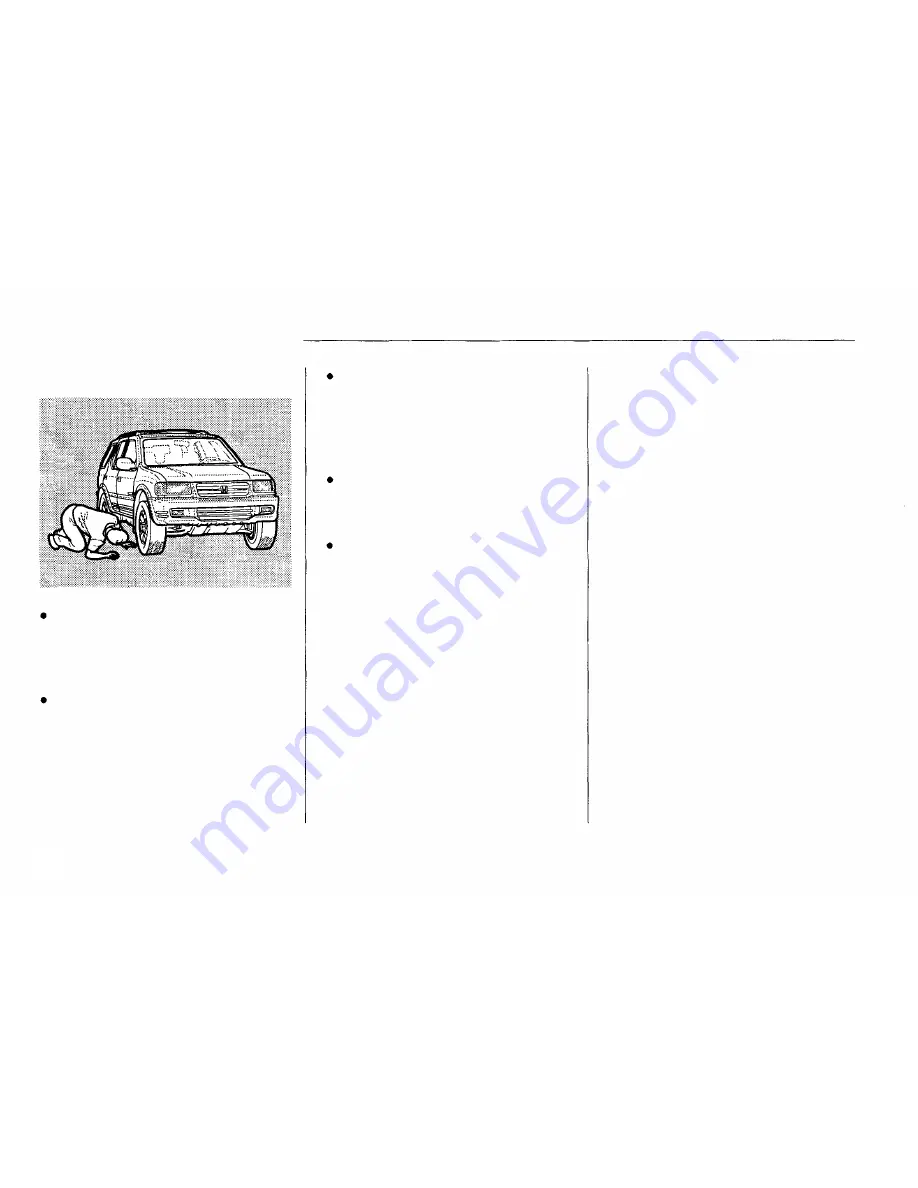
Inspection and Cleaning
Check the condition of your
tires. Damaged tires are more
likely to fail and should not be
used on pavement.
If you let air out of your tires,
inflate them to the
recommended levels before
going any distance on
pavement. If you must drive
with underinflated tires, do not
exceed 30 mph.
Remove any mud that may
have stuck to the tires, wheels,
or driveshafts. Mud can cause
imbalance and damage
important vehicle components.
Remove any twigs, rocks or
other objects you might have
picked up along the way.
Follow all procedures for
shifting back to 2-wheel drive
if you've been traveling in
4-wheel drive.
When you get home, thoroughly
wash your vehicle and inspect it
closely for signs of damage. Give
special attention to the tires, rims,
suspension and other Underbody
components, and correct any
problem you find. Also make sure
all nuts, bolts and other critical
fasteners are properly secured.
Driving off-road causes more
wear-and-tear on the paint and
exterior trim. Stones and other
debris thrown up by your tires,
and the tires of other off-road
vehicles you are following, can
chip the paint and chrome. Bushes
and tree branches can cause
hairline scratches. Although there
are some protective devices
available (mud guards, etc.) a
vehicle that is driven off-road will
incur more damage than one that
is not. Frequent washing and
waxing may help to minimize the
damage caused by off-road
driving.
Before returning to pavement:
Off-Road Driving Information

































